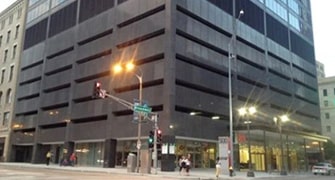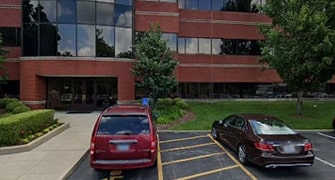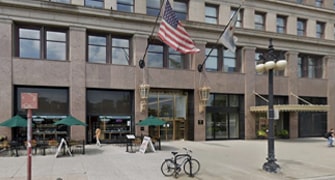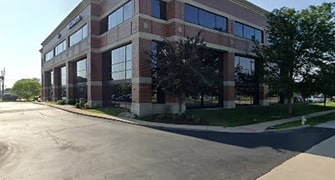Free Consultation
(314) 500-HURTNo matter if they involve a child, a teen, an adult or a senior, pedestrian accidents happen far too frequently in St. Louis. Pedestrian deaths nearly doubled from 2019 to 2020 in the City of St. Louis, and in 2021 more than 14,000 pedestrians were injured in Greater St. Louis. These numbers are frightening, seeing as everyone is a pedestrian.
If you or a loved one was injured in a pedestrian accident due to someone else’s negligence and recklessness, call Burger Law immediately at (314) 500-HURT or fill out our online contact form to schedule a free consultation with one of our personal injury attorneys regarding the specifics of your claim.
If you were injured through no fault of your own in St. Louis or anywhere in Missouri, see how much your claim may be worth by using our free personal injury calculator.
More than 7,000 pedestrians were killed on U.S. roads in accidents involving a motor vehicle in 2020, according to the Centers for Disease Control and Prevention. There were also an estimated 104,000 emergency room visits by pedestrians treated for motor vehicles crash-related injuries. Overall, one in six people who died in crashes throughout 2020 were pedestrians. These same studies indicate that the majority of serious pedestrian accidents occur in urban areas and at night.
Alcohol was involved for the driver and/or pedestrian in nearly half (46 percent) of pedestrian accidents that resulted in a pedestrian death in 2019. In addition to driving under the influence of drugs or alcohol, these factors contribute to pedestrian accidents:
Age is another factor, as seniors and children are involved in a disproportionate number of pedestrian accidents. The seriousness of pedestrian accidents is generally proportional to vehicle speed and impact angle. A study by the Foundation of Traffic Safety showed that the risk of pedestrian injuries and death increases by at least two to three percent for every additional one mile per hour of vehicle speed. Also, pedestrians have less than a 5 percent chance of suffering fatal injuries when hit by vehicles traveling less than 25 mph. The rate of fatalities in pedestrian accidents increased to 45 percent for vehicles traveling 35 mph, and jumped to over 90 percent for vehicles traveling 60 mph.
If you or a loved one was involved in a pedestrian accident, call Burger Law right away at (314) 500-HURT or complete our online contact form. Our St. Louis pedestrian accident attorney will fight for and demand maximum compensation from the liable party.
As stated above, most St. Louis pedestrian accidents involve alcohol, distracted driving and speeding. Typically, the most common injuries our St. Louis pedestrian accidents lawyer sees include:
There were over 64,000 traumatic brain injury deaths in 2020 according to the CDC, and trucks and cars are one of the leading causes of fatal TBI. Traumatic brain injuries are caused by sudden trauma, either by impact or penetration, to the brain. While mild and moderate cases generally heal successfully, severe TBI can result in coma or death. Severe traumatic brain injuries are the leading cause of death and disability for individuals under the age of 44.
Spinal Injuries are serious injuries that can affect your mobility and the motor function of your limbs. The spinal cord is the main avenue that your brain uses to send commands throughout your body. According to the World Health Organization, 90 percent of spinal cord injury cases are caused by trauma. Any damage to your spine can often result in serious injuries throughout other areas of the body.
Trauma from St. Louis pedestrian accidents and other similiar traumas are the most common causes of broken bones. Extreme breaks like displaced fractures or comminuted fractures when the bone is shattered into several pieces can be particularly dangerous.
The shock of sustaining injuries in a St. Louis pedestrian accident can have lasting effects, such as:
Not all responsibilities toward pedestrians lie solely with drivers of motor vehicles. No, property owners have a duty to neighbors, postal workers, guests and others lawfully on their property, to keep their property free from hazards that are likely to cause injury. The following examples are common cases of premises liability that can also cause pedestrian accidents:
How walkable is your community?
Whether a motor vehicle was the cause of your pedestrian accident, or it is more in the premises liability realm, you do not want to go at this alone. A Burger Law St. Louis pedestrian accidents lawyer has the experience and resources available to fight for your recovery and your future. Our law firm has recovered millions of dollars in verdicts and settlements for our St. Louis clients, as well as those throughout Missouri and Illinois.
Call us now at (314) 500-HURT or contact us online for a free, no-risk consultation.
Other car accident cases we take on in St. Louis and throughout Missouri and Illinois include:
We offer free consultations and are available 24/7 to take your call. Live chat, text, and virtual meetings are available.
Client Reviews
This law firm is absolutely amazing. They took on my case, when nobody else would! They fought hard for me when it seemed there was no hope. They kept me informed and always asked for my input before making decisions on my case. Gary puts himself into every case unlike most law firm owners. Gary and his team really care about every one of their clients, and fights hard to get you a fair settlement. They actually won my case out of court, and then reduced my fees to make sure I could get my car fixed and be able to get back to some normality. I would recommend Burger Law over and above any other firm! If you go somewhere else you aren’t getting the best!
View More Reviews on Google Maps and Yelp


521 W. Main Street Suite 201 O
Belleville, IL 62220
By appointment only
(618) 500-4878 GET DIRECTIONS
332 S Michigan Ave Suite 900
Chicago, IL 60604
By appointment only
(312) 500-HURT GET DIRECTIONS
100 Chesterfield Business Pkwy Suites 200-222
Chesterfield, MO 63005
By appointment only
(314) 648-8348 GET DIRECTIONSNO FEES UNTIL WE WIN YOUR CASE
We offer free consultations and are available 24/7 to take your call. Live chat, text, and virtual meetings are available.
or call us at